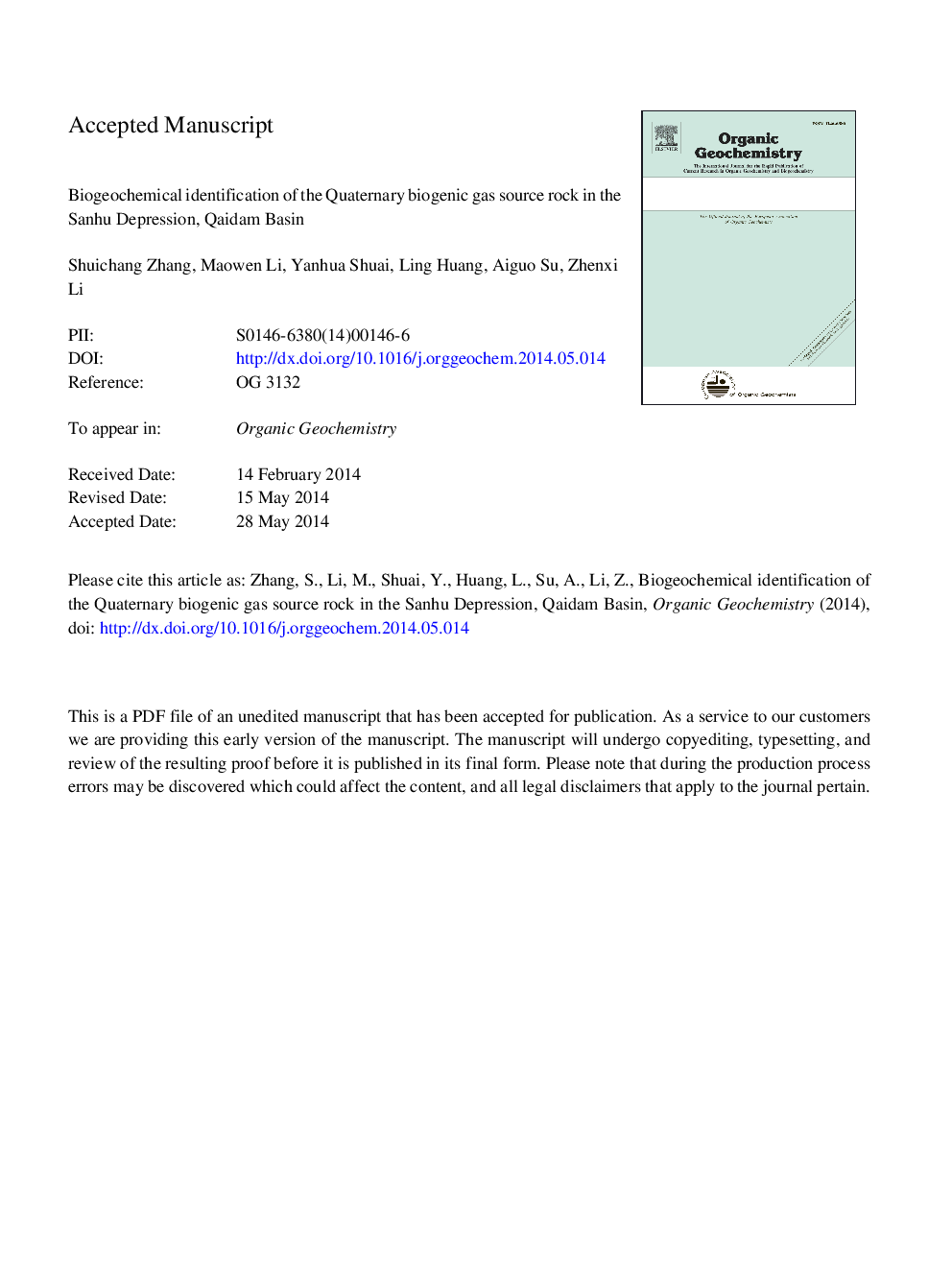| Article ID | Journal | Published Year | Pages | File Type |
|---|---|---|---|---|
| 5162413 | Organic Geochemistry | 2014 | 29 Pages |
Abstract
Biogenic gas, an important type of natural gas, is produced by sedimentary organic matter via methanogenic processes through aerobic respiration, nitrate reduction and bacterial sulfate reduction (BSR) after burial. These diagenetic processes take place under special conditions and environments, and produce specific products. Based on a study of tracers of different diagenetic stages, this paper thoroughly examines various rocks of the Quaternary gas-producing province in the Sanhu Depression, Qaidam Basin. The possible source rocks for the biogenic gas were identified through investigating the special minerals, characteristics of organic matter, and their inter-relationship. The results demonstrated that the abundance of the primary active organic matter constrained the diagenetic stages of sediments. Mudstones with extremely low abundance of organic matter are at a stage of aerobic degradation and have not reached the reducing stage yet. The organic carbon is dominated by recycled black carbon with low hydrocarbon generative potential. Mudstones containing a little more organic matter are mainly at the BSR stage. The associated sedimentary organic matter is dominated by algae and chitin, which have been converted into inert components due to extensive BSR. BSR has thus reduced the hydrocarbon generative potential and the activity of organic matter, leaving little reactive organic matter for the methanogenesis process. Carbonaceous mudstones with a high abundance of organic matter, on the contrary, contain abundant algae and higher plants that can largely survive BSR and remain active after the BSR stage. These sediments constitute the primary gas source in the study area.
Related Topics
Physical Sciences and Engineering
Chemistry
Organic Chemistry
Authors
Shuichang Zhang, Maowen Li, Yanhua Shuai, Ling Huang, Aiguo Su, Zhenxi Li,
